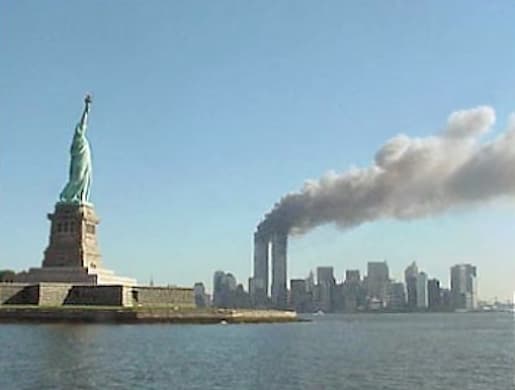With Iran Deal Looming, Let’s Not Forget the Al Qaeda Connections
One would be hard pressed to name a foreign entity that has killed more Americans over the last three decades. Few have sown as much death, destruction, and terror as the Islamic Revolutionary Guards Corps.

As part of what looks to be a forthcoming deal with Iran, the Biden White House is reportedly considering removing sanctions from its Islamic Revolutionary Guards Corps. The Trump administration designated the IRGC as a foreign terrorist organization in April 2019 — and for good reason.
One would be hard pressed to name a foreign entity that has killed more Americans over the last three decades. Few have sown as much death, destruction, and terror as the IRGC.
The IRGC was created on the eve of Iran’s 1979 Islamic Revolution. Ayatollah Ruhollah Khomeini, the founder of the new regime, wanted to “guard the revolution and its achievements.” Khomeini sought to create a “new Islamic epoch” that, while launched by a Shi’ite Muslim, “was free of confessional restraint,” as the scholar Ray Takeyh highlighted in his 2011 book “Guardians of the Revolution.”
It would be up to the IRGC to be the “military arm of God’s will” for the theocratic dictatorship. And the Quds Force, a branch of the Guards, would prove key in exporting Khomeini’s vision of an Islamic revolution beyond Iran’s borders.
Almost from its inception, the IRGC Quds Force prioritized targeting and murdering Americans. The organization began training — and in some cases creating — terrorist groups in Lebanon’s Bekaa Valley in the 1980s. Over the next several decades and to the present day, Iran would train U.S.-designated terrorist groups including Hezbollah, Palestinian Islamic Jihad, Hamas.
Al Qaeda also counts among the terrorists the IRGC aided. Although some pundits have tried to downplay Tehran’s connections to the terrorist group, there is ample evidence to prove it. The last four American administrations have documented the ties, as have U.S. courts, the bipartisan 9/11 commission, and documents seized during the 2011 raid that killed Al Qaeda’s leader, Osama bin Laden.
Declassified CIA material show that Tehran offered secret arms, funding, and training to the terrorist group.
Indeed, under the Obama administration, the U.S. Treasury Department designated numerous Al Qaeda operatives who were given shelter in Iran, and the CIA even developed a program, code-named RIGOR, to monitor them.
As the Committee for Accuracy in Middle East Reporting and Analysis has noted, testimony from several former Al Qaeda members further illustrates the close relationship between the IRGC and the terrorists. For their 2017 book “The Exile,” British writers Cathy Scott-Clark and Adrian Levy interviewed several Al Qaeda operatives, including a senior member of the terrorist group who was dispatched to Iran in December 2001 to negotiate sanctuary for members and families of the terrorist group after the American invasion of Afghanistan, Mahfouz Ould al-Walid.
Alias Abu Hafs al-Mauritani, Al-Walid met with members of the Ansar ul-Mahdi Corps, an elite unit of the IRGC. The Quds Force commander at the time, Qassem Soleimani, approved Al Qaeda’s request for safe haven in January 2002. Al Qaeda operatives and their families were granted secret asylum in Tehran — including at the four-star Howeyzeh Hotel, where the men involved with planning the largest mass murder in American history were provided with “room service, a ladies-only gym, movies and a swimming pool for the children.”
Soleimani “also arranged for shopping trips for the al-Qaeda women, who took along their younger children and walked around the markets and bazaars freely.” In 2007, the IRGC leader “turned up in person to celebrate” the Muslim holiday Eid with bin Laden’s sons, “sitting down with the heir of the world’s most infamous terrorist to break the fast.”
As importantly, the IRGC assisted fleeing Al Qaeda members, providing them with documentation and helping them relocate to other countries.
The IRGC would help a Jordanian-born terrorist named Abu Musab Zarqawi, providing him with Iranian passports and a satellite phone and granting him the ability to travel throughout the region, recruiting jihadists to fight Americans. “Al Qaeda, working with the Quds Force, had turned Iran into its main supply artery for the coming war in Iraq,” Ms. Scott-Clark and Mr. Levy conclude.
Zarqawi would go on to lead Al Qaeda in Iraq, the progenitor of the Islamic State in Iraq and Syria. Before his 2006 death at the hands of coalition forces, Zarqawi successfully ignited a sectarian conflict in Iraq and murdered scores of American troops.
Indeed, the IRGC itself would go on to murder and maim Americans and our allies in both Iraq and Afghanistan. According to a 2019 Pentagon estimate, no fewer than 603 Americans serving in Iraq were murdered by terrorists who were among those trained and equipped by the IRGC. This, the Military Times reported, means that “roughly one in every six American combat fatalities … are attributed to proxies sponsored by the Islamic Revolutionary Guard Corps.”
The facts speak for themselves. The IRGC is a terrorist organization with American blood on its hands. It is dangerous — and to the families of the IRGC’s many victims, profoundly unjust — to pretend otherwise. “Those who do not see what is real,” the historian G.J. Meyer observed, “are generally doomed to collide with it.”

